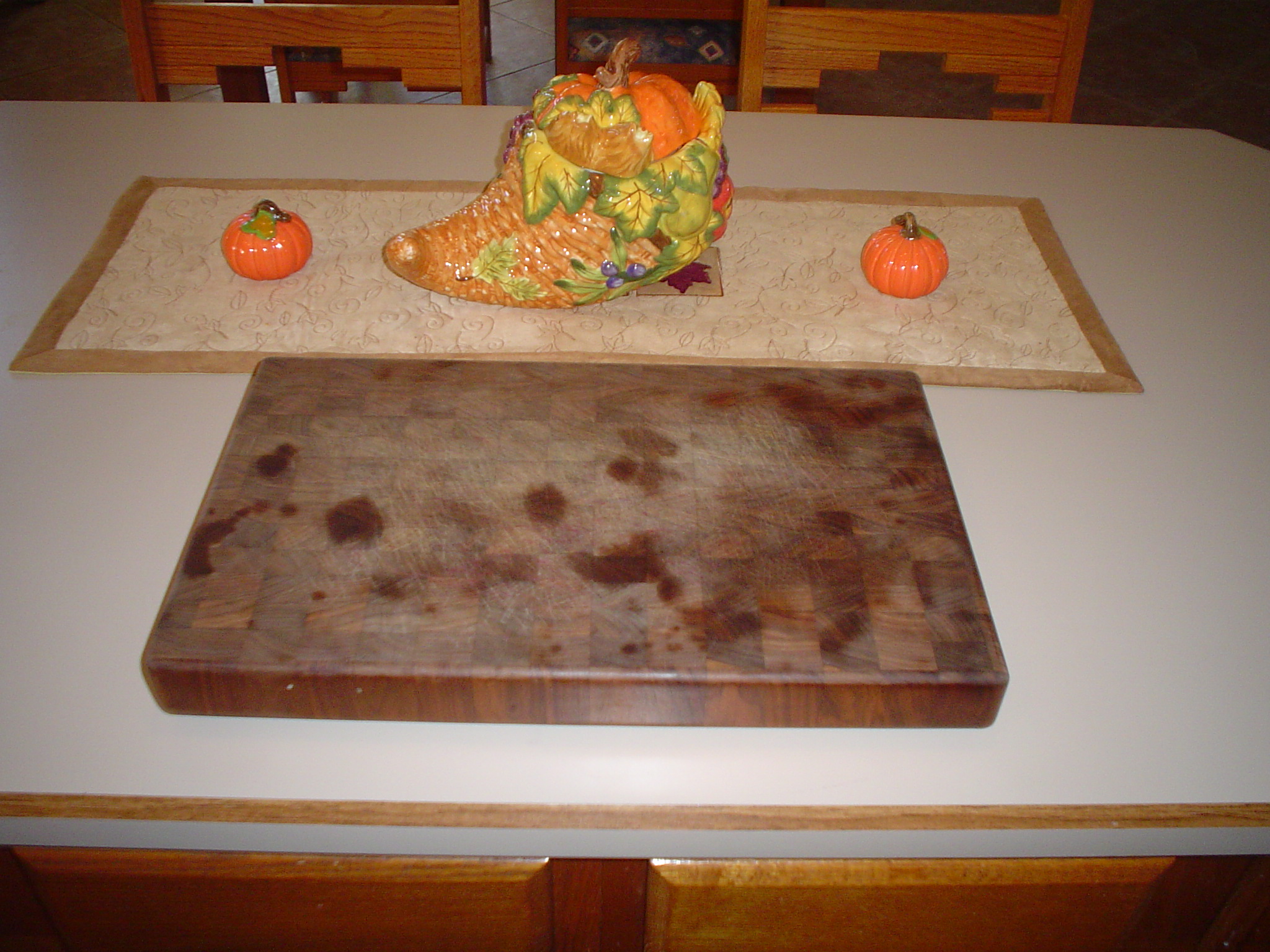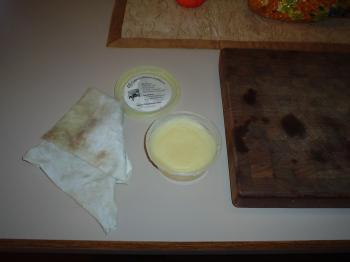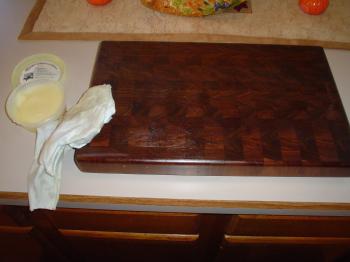Great for all wooden cooking products!



Regular Maintenance: Rub entire cutting board with mineral oil or beeswax conditioning cream. Let it stand for 15 minutes before wiping off the excess oil or conditioner with a clean dry cloth or paper towel. Do not use vegetable based oils, as these oils can go rancid and create a health problem.
If your cutting board looks dry like the left picture, it may have been washed with dish soap and you can see that it really dried out the wood. It's important to condition your board in order to put moisture back into the wood.
I use a mineral oil and beeswax conditioning cream. If you only have mineral oil, that works just fine too. Work in the conditioning cream and allow it to soak into the wood. After letting the oil soak into the board, I wipe off the excess cream. The right image is the completed conditioned cutting board. I condition our board when it looks dry.
Wood products continue to live, breath, expand and contract as your environment changes in your house. As your cutting board acclimates, you may notice glue lines raising. To make your cutting board look and feel new again, rub the entire cutting board with mineral oil. You can hand sand or use a finish sander and either 220 or 320 wet/dry sandpaper. If you hand sand, use long strokes from one end to the other. Wipe off the excess oil with a clean dry cloth.
It's best not to submerge your cutting board or wood utensils in a sink of water. Just use a wet dishcloth to wipe it clean and towel dry. Our cutting boards are not dishwasher safe. If an aluminum can is placed on top of your cutting board and it leaves a white ring. Then, squeeze lemon juice on the ring and in most cases it will disappear.